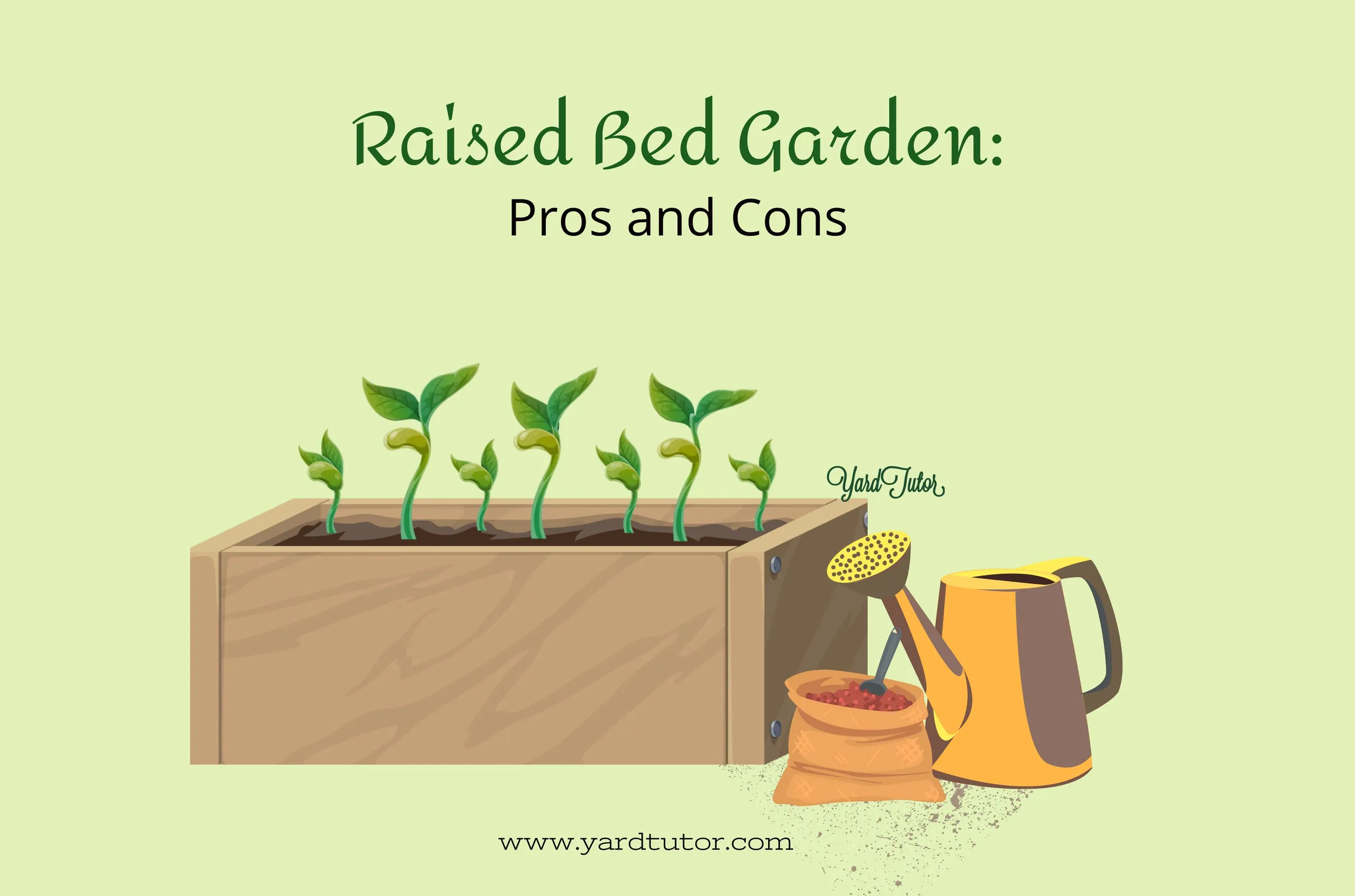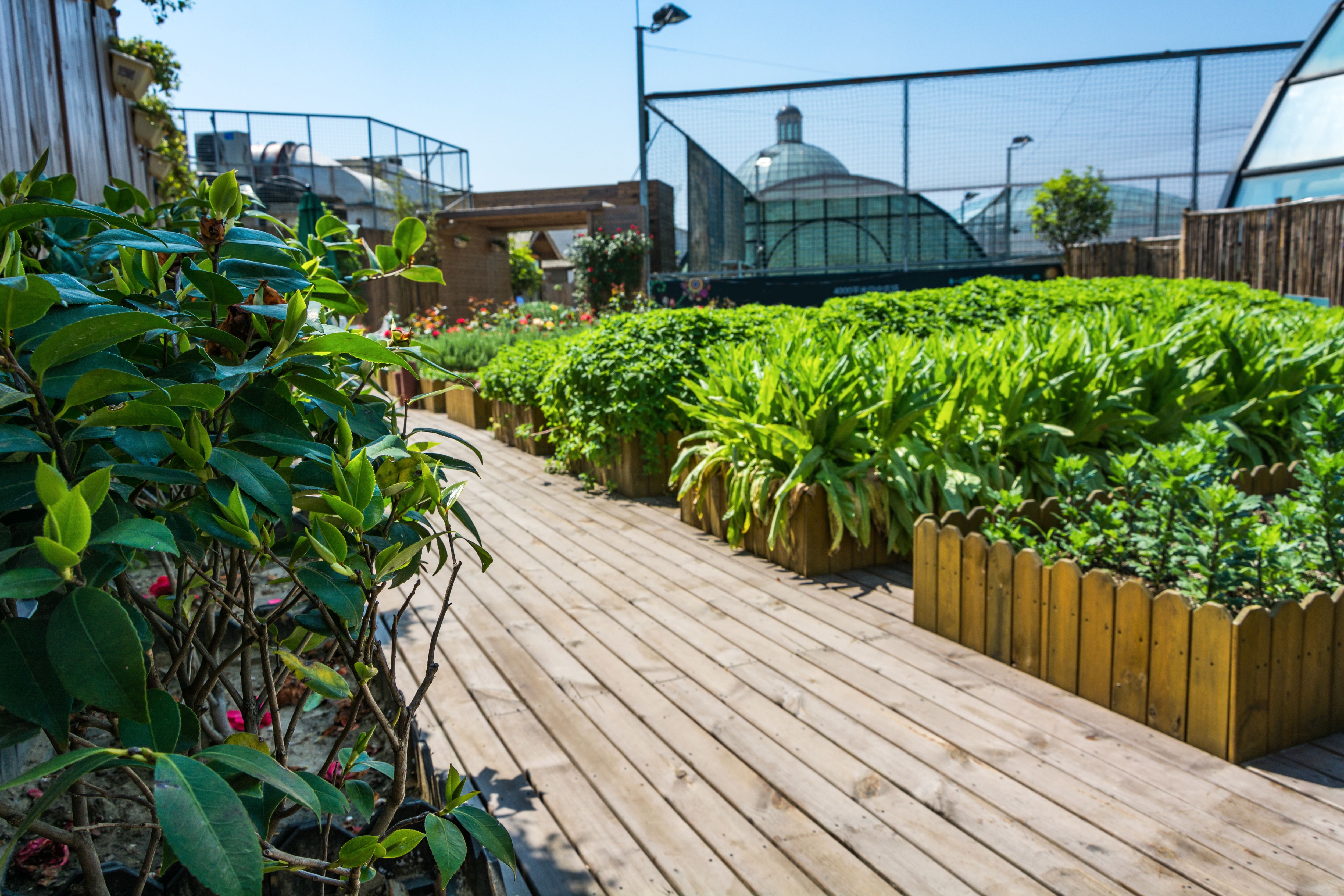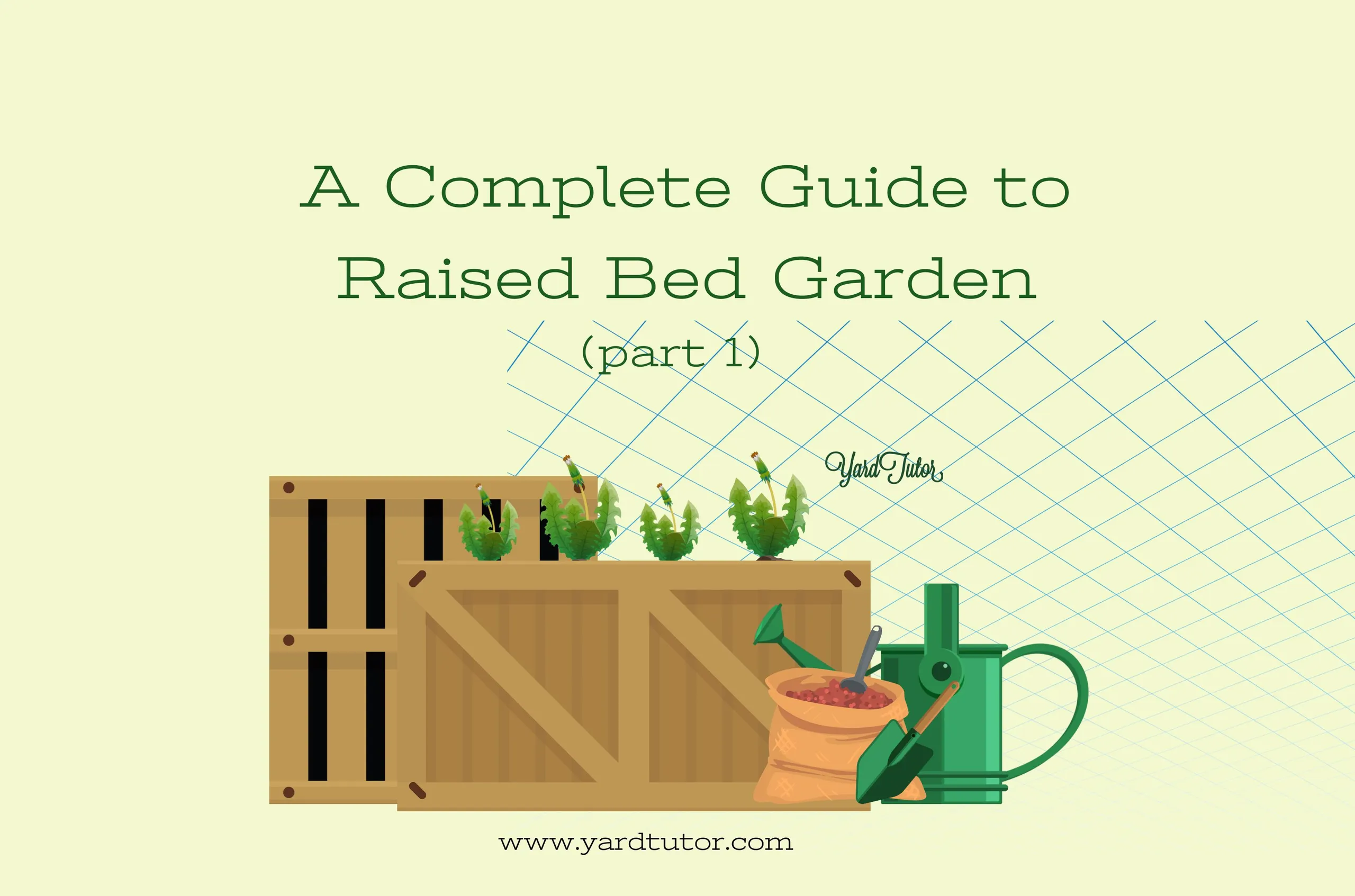Pros and Cons of Raised Bed Garden

Gardening is a popular hobby around the world. You can always find a backyard filled with lovely flowers or fresh vegetables, no matter where you live. For instance, in the USA, 71.5 million or 55% of households have a backyard garden, according to Ruby Home. And people don’t just garden for no reason. In addition to offering nutrient-rich food and appealing décor, gardening also improves the physical health and emotional well-being of people.
Given the diversity of gardening techniques and styles that are currently available, you might be perplexed if you’re just starting your first garden. And considering the appeal of raised bed gardening, you’ve likely heard a lot about it.
However, before deciding on this form of gardening, you should weigh its advantages and disadvantages to see whether it is a good fit for you. To assist you with that, I will thoroughly discuss the pros and cons of raised bed gardening in this article, but let’s first delve into the obvious: what is a raised bed garden.
What Is Raised Bed Garden?
A raised-bed garden is a type of garden where the soil is elevated above the surrounding ground and is typically enclosed with frames made out of different materials such as wood, metal, plastic, stone, bricks, etc.

Photo by Jeyaratnam Caniceus on Pixabay
Typically, the garden beds are elevated to a height of at least 6 to 8 inches from the surface. Building raised beds is quite easy. These garden beds can be constructed in any size or form you need, and there are even prefabricated custom-sized raised beds available to buy.
Pros of Raised Bed Gardens
You can find plenty advantages of a raised bed garden when compared to in-ground bed gardens, raised bed gardens have many advantages.
1. Better Control Over Soil Quality

Photo by pvproductions on Freepik
In a raised garden, you have more control over the soil. Raised beds can be topped with the perfect soil that will be appropriate for your plants rather than just using the topsoil that already exists in your region.
By mixing fertilizer, manure, bagged soil, and compost, you can create the ideal soil for your beds. If you want, you might just refrain from using your local soil.
2. Suitable for Small Spaces

Photo by Freepik
One of the many benefits raised garden beds offer is that they take up significantly less space compared to in-ground beds. As there isn’t much space for gardening in urban areas, raised beds make sense there.
Most raised beds are 4 feet wide, with the length depending on the gardener’s preference and the space they have. As a result, these beds provide a practical approach to garden extensively within limited space.
3. Hard Surface Is Just as Good

Photo by evening_tao on Freepik
Building raised gardens on the sidewalk, driveway or even a patio area is a viable option if you don’t have enough space for gardening. The beds can be placed anywhere as long as it receives adequate sunlight.
However, to prevent water-logging, a raised bed built upon pavement or some other hard surfaces has to have a false bottom and drainage holes cut at the bottom. A layer of drainage materials, such as hardware cloths between the soil and the surface, can act as a false bottom as well.
4. Perfect for Slopped / Hilly Areas
Not all lawns are made alike; although some are perfectly level, others may be situated on a surface that slopes upward or downward. Raised gardens are simpler to construct and manage than in-ground gardening, even in sloping or hilly areas. It is one of the several benefits raised garden beds offer.
These gardens can be placed on slopes with functioning drainage. There will be some digging and leveling to do, but no substantial soil manipulation is necessary.
5. Avoid Any Soil Compaction
The loss of permeability in your soil is known as soil compaction. It can result in a decreased capacity to absorb or retain both water and nutrients. This typically occurs when you step or walk on the garden soil.
As raised garden beds can be built in any shape or size and organized in any way, it is simple to put pathways between the beds. As a result, soil compaction won’t occur because you’ll never have to walk on the bed’s soil.
6. Easier Weed Management
Compared to an in-ground garden, a raised bed kitchen garden has fewer issues with invasive plants such as weeds.
Your elevated gardening beds will be far less likely to harbor weeds if you fill them with weed-free solarized soil. The hardware cloth-lined bottom and the frames of the beds both work to prevent weed growth in them. Additionally, in well-maintained and mulched beds, weed populations gradually decline.
7. Better Irrigation
One of the many major benefits raised garden beds provide is that they can be equipped with any type of watering system. On these beds, you can install drip irrigation, soaker hoses, sprinklers, or even automated irrigation devices.
8. Keep Rodents and Digging Pests Away
Utilizing raised beds is the most efficient way to prevent tunneling pests, such as moles or gophers, from destroying your garden. These beds’ bottoms can be wrapped with chicken wire or hardware cloth to prevent borrowing animals from getting in; however, closed bottom beds with drainage holes are more effective in this aspect.
Additionally, the height of the beds and the frame can also deter rodents. You cannot effectively accomplish this with in-ground beds without using poison or traps, which are bound to harm the animals.
9. Fight Cold Weather Effectively
It is essential to have some protection from the cold since fragile plants die around 32 °F or below temperature. And, with these beds, you can protect the soil and plants in your garden not just from pests and diseases, but also from cold weather.
In the wintertime, you can easily mount frost blankets on these beds. Given that these beds are compact and have pathways, a greenhouse can be constructed around them as well. These guard against frost damage to your garden plants.
10. Grow a Wide Variety of Crops
You can raise as many different kinds of plants as you like by managing every part of your raised garden. For different plant species, you can construct separate raised beds with the appropriate soil. You can construct deeper beds for plants with deep roots and shallower beds for plants with small root systems. You can also construct supporting structures for plants that require them. These all enable you to effectively grow a variety of crops in the same garden.
11. Keep Your Garden Safe Where Water Logging Is Common
Water logging is a serious problem in gardening. A plant’s ability to absorb oxygen is reduced when it spends an extended amount of time in waterlogged soil, which results in yellow leaves, rot disease, and ultimately death.
If you live in an area where water-logging happens frequently, if your yard is near a downhill where water pools, or if the soil there is less able to drain the water, building elevated beds can prevent such issues.
12. Protect Your Garden Against Any Kind of Contamination
When you construct a raised garden, every aspect of it remains completely under your control. You have a variety of options, including the material used to build raised beds, the type of soil used to fill them, how much fertilizer to use, the crops to be planted, and the size and form of the beds. As a result, you are protected against contamination of any sort, since you can thoroughly inspect each material and discard those that are tainted.
13. Grow Crops Beyond Their Growing Season
Gardening shouldn’t end with the summer. You can significantly extend the growing season with a raised bed kitchen garden.
These beds make it very simple to install additional structures such as cold frames, crop coverings, and hoop houses, allowing you to prolong the growing window of your crops. Also, elevated bed soil dries and heats up more quickly than soil at ground level since the soil is raised higher than the ground level soil. This causes the beds to warm up more quickly in the spring, stay warmer into the fall, and lengthen the growing season.
14. Almost Any Weather Condition Is Convenient
You can build raised beds for your garden and place them anywhere, in just about any climate, if you have proper drainage, an irrigation system, and a weather-protective structure, all of which are inexpensive and also easy to make at home. Because your beds are elevated high above the ground and the coverings are simple to install, your plants will survive in these beds even in extreme heat, wind, or cold.
15. Easy Management
Effortless management is just one of the numerous benefits raised garden beds offer.
After the beds are built and loaded with plants, they require relatively little upkeep. Additionally, they are easier to maintain because of their small size and reduced risk of weed and pest infestation. If the frames are sound and the soil is sufficiently nutrient-rich, you won’t need to do much more than water your plants and enjoy the delicious fruits of your garden.
16. No Soil Erosion
If the soil you are using is more prone to erode or water runoff, these enclosed raised garden beds help prevent erosion.
You don’t need to be concerned about the nutrients in your soil washing away when it showers or when you water the garden. These beds’ bottoms can be easily lined with a variety of materials to avoid soil erosion.
17. Ensures Accessibility for All
One of the many benefits raised garden beds offer is that it reduces of stooping and kneeling required when sowing, caring for the plants, and reaping the crops. Anyone with mobility limitations can certainly benefit from these beds, as every aspect of these beds can be modified according to the gardener’s needs. Additionally, these beds typically have pathways that are broad enough for wheelchair accessibility.
Cons of Raised Bed Gardens
Every facet of life has downsides, and raised bed gardens are no exception. The following is a list of several disadvantages that raised bed gardens have.
1. Expensive
The initial cost of raised gardens is higher compared to in-ground gardens. The price does vary depending on the type of material used for the frame, but it does add up to the budget. Additionally, the cost of purchasing bagged soil, fertilizer, tools, and supporting structures, when all added together, can be considerably high.
You cannot minimize the cost of soil or fertilizer to zero, but what you can do to keep the initial budget in check is plan accordingly. Select plants that don’t require extra supporting structure or are prone to weeds or need less fertilizer. In-season plants will be cheaper than growing something out of season in most cases.
2. Takes More Time to Set Up at the Initial Stage
Sure, these types of gardens require minimal upkeep, but they can be time-consuming to set up in the beginning. Compared to in-ground beds, it will take more time to arrange, construct, and plant the beds. Additionally, it will take longer if you lack the necessary skills to create such structures.
You can always take an experienced handyman or garden specialists’ help to speed up the process, but this will increase the budget.
3. Needs More Water
Raised beds often require frequent irrigation since they dry up more quickly in warmer seasons. Because of this, a watering system needs to be installed in these beds.
Contradiction: Some Say “Raised Bed Gardening Needs Less Water”
Some folks think that raised bed gardening requires less water. Instead, this type of garden needs more watering since the soil in these beds doesn’t retain as much moisture thanks to their efficient drainage.
4. Low Levels of Soil Nutrients
Worm and microbial activity can be found in in-ground beds’ soil, but not in those of elevated beds’ soil. As a result, the soil on elevated beds tends to be less nutrient-rich. Furthermore, since these beds require extra watering, there is a significant possibility of nutrients washing away. By using lining materials, this can be managed.
5. Not Suitable for Hot and Dry Climate
In hot and arid climates, this type of gardening is not appropriate since the soil dries out very rapidly. And to prevent this, you need water more frequently, which might result in other issues like moisture stress, water-logging, and leaching of the essential nutrients.
You can install smart irrigation system and use lining materials to fight this though. The cost will increase. True, but think of all the benefits!
6. Some Plants May Have Restricted Growth Due to Less Space for the Growth of Their Extensive Roots
The roots of deep-rooted plants, such as pumpkins, can reach depths of up to over 30 inches. The growth of such a plant can be inhibited if the soil in the elevated beds lacks the depth to accommodate its root. This is a significant drawback since either the height of the beds must be raised or shallow-rooted plants must be sowed. So we need to be mindful of these facts while planning the garden.
7. May Not Make Sense if You Have Plenty of Area for an In-Ground Garden
Raised gardens are typically constructed in areas with low-quality soil or that have insufficient space for gardening. But if you have sufficient space, it is pointless to construct elevated beds for gardening.
8. More Difficult to Prepare
The construction and leveling of this type of garden require extra work and resources. You might also need professional help with building these elevated beds.
Concluding Thoughts
As you can see, raised bed gardening offers more benefits than drawbacks. However, gardening on the ground is encouraged, especially if you are gardening for the first time unless any of the arguments in favor of raised bed gardening are really persuasive for you.
But now that you are aware of the pros and cons of raised bed gardening, I will leave it up to you to choose whether to use this gardening technique.









